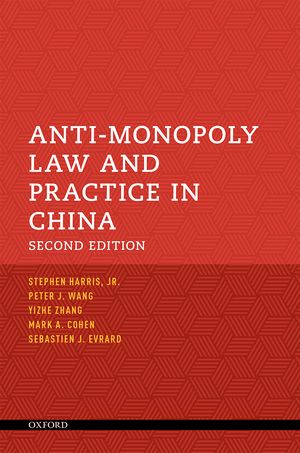
Anti-Monopoly Law and Practice in China was the first treatise on the China Anti-Monopoly Law (AML), and remains the most comprehensive work on this legislation. It provides a thorough explanation of the law as well as regulations promulgated under the law, agency practices, and other relevant Chinese laws that may also apply to anti-competitive conduct.
The book sets out the legislative history and context of the AML. It then considers each chapter of the law in detail, offering a ready reference to each of the law's substantive provisions: monopoly agreements; abuse of dominance; merger control; cases involving government-related entities, including administrative monopolies, state-owned enterprises, and trade associations; intellectual property rights, abuses, enforcement, and remedies; the structure, powers and duties of the enforcement agencies, the Anti-Monopoly Commission (AMC) and Anti-Monopoly Enforcement Authorities (AMEA); the role of the courts; and the intersection with other competition-related laws.
The work adopts an international and comparative approach to the law, drawing similarities and differences with the antitrust law of the United States and the competition law of the European Union to provide a richer understanding of how the China Anti-Monopoly Law compares with the laws of established jurisdictions. It also includes the texts of relevant regulations, rules, and guidelines, to provide a comprehensive guide in a single volume.
Anti-Monopoly Law and Practice in China is an accessible and invaluable reference source for practitioners and scholars alike, offering the reader a complete and detailed account of this relatively new and highly significant antitrust regime.